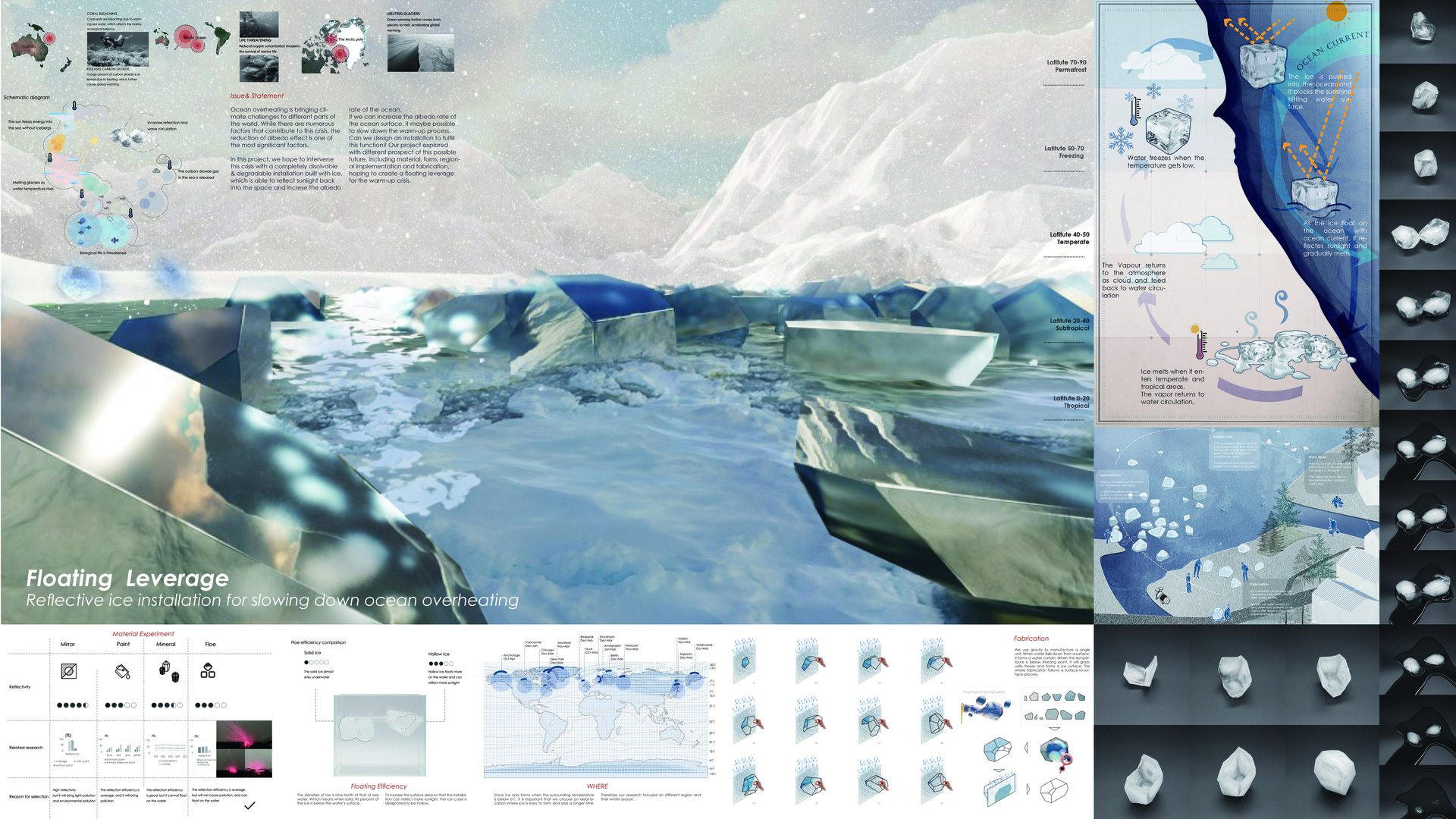Project Description
Ocean overheating is bringing climate challenges to different parts of the world. While there are numerous factors that contribute to this crisis, the reduction of albedo effect is one of the most significant factors. In this project, we hope to intervene this crisis with a completely dissolvable & degradable installation built with ice, which is able to reflect sunlight back into the space and increse the albedo rate of the ocean. The warm-up not only results in ice melt and albedo decrease, but also triggers a positive feedback. Humidity also increases; water vapor is a powerful greenhouse gas. More ice therefore melts, which exposes more water, which melts more ice …This loop fuels itself, the effect getting more and more pronounced. Is there a way to break the loop? If we can increase the albedo rate of the ocean surface, it may be possible to slow down the warm-up process. Our project explored with different prospect of this possible future, including material, form, regional implementation and fabrication, hoping to create a floating leverage for the warm-up crisis. When it comes to reflection rate, the angle of refraction, the angle at which the light strikes the surface, and material that the light is hitting are the three factors that influence reflection of a material. Though its reflection performance is not eminent among the four materials, ice was chosen because it is totally degradable and there is no need for recycling. The raw material - water is also easily accessible for almost every spot on the earth. The eco paths of ice blocks include 4 steps - fabrication, implementation, melting and freezing. Firstly, they are fabricated in high latitude area, during its floating voyage, they reflect sunlight. When the temperature rises, the ice melts and it returns to the Earth’s water circulation. When considering the form, we hope that on the basis of reflecting sunlight, the installation can not only demonstrate diamond-like elegant light effect, but also show up in front of the public in the form of drifting floe, in order to warn the negative impact of global warming on glaciers. Our operation guideline includes four aspects - where, fabrication, process implementation and service life. WHERE - Since ice only forms when the surrounding temperature is below 0℃, it is important that we choose an ideal location where ice is easy to form and lasts a longer time. Therefore, our research focused on different region and their winter season. FABRICATION - We use gravity to manufacture a single unit. When water falls down from a surface, it forms a water curtain. When the temperature is below freezing point, it will gradually freeze and forms a ice surface. The whole fabrication follows a surface-to-surface process. PROCESS IMPLEMENTATION - The whole manufacture process can be implemented completely by hand. People start with fetching water from nearby waterfront. Next, water is brought to fabrication site where ice cubes are assembled from surface-to-surface. The fabrication follows a gravity-leaded guideline. SERVICE LIFE - The service life of ice depends on the environment temperature and the volume of the ice. Under the temperature of 15 ℃(59℉), it takes a total seven hours for the ice to melt down. The estimated service life of a 1 to 1 scaled ice in high-latitude area is about 5 days.
